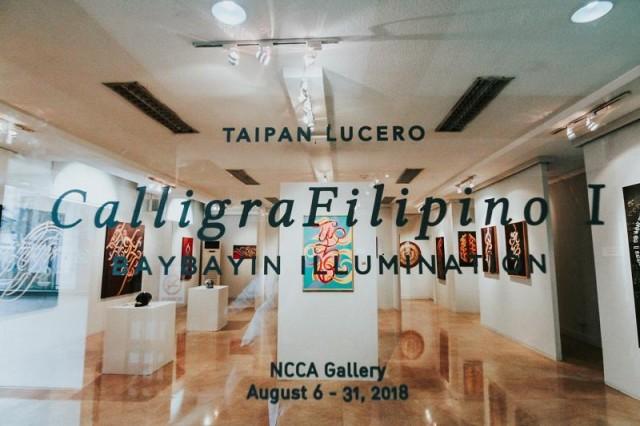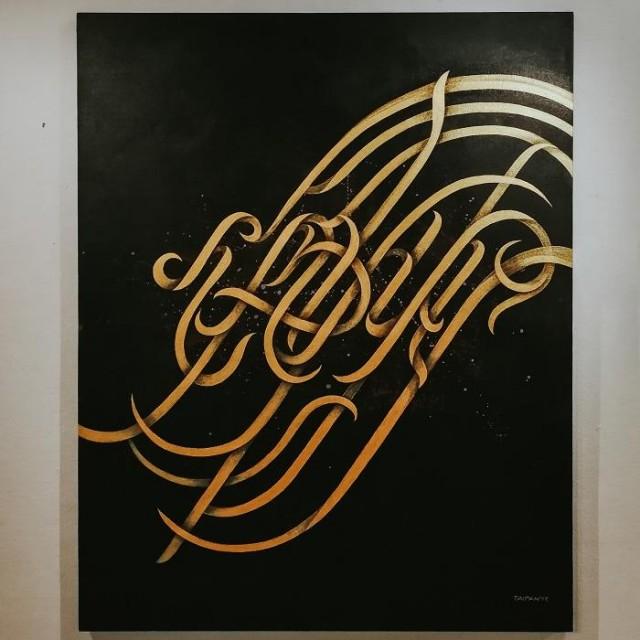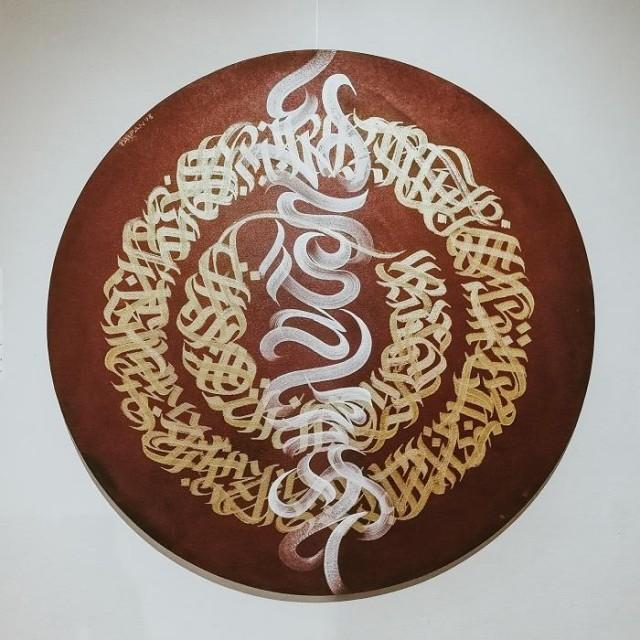Until August 31: An exhibit on Baybayin art at the NCCA gallery
An exhibit on baybayin art just opened in the National Commission for Culture and the Arts Gallery in Manila.
"CalligraFilipino I: Baybayin Illumination" is a solo exhibition showcasing the work of young artist Taipan Lucero and his “CalligraFilipino,” a self-developed baybain calligraphy, called thus by playing on the words calligraphy and Filipino.

Baybayin is one of our country’s pre-colonial writing system and is used by the Tagalog.
More than 30 of Lucero’s artworks are featured in the gallery. Most of these are done using acrylic on canvas.
His passion for CalligraFilipino started when he was still an advertising practitioner in Japan. Back then, part of his training was to learn Shodo or Japanese calligraphy.
He was inspired by how the Japanese people show importance to their calligraphy tradition. He wanted to do it for baybayin.
"Para sa kanila, isang artform ang Japanese calligraphy. It’s a discipline. Talagang pinagtutuunan nila ng oras at pansin. Mayroon naman tayong sariling alpabeto. Puwede natin itong gawing art form. Puwede nating bigyan ng ganoong kataas na respeto ang baybayin." he says.
Promoting Filipino culture
More than creating artworks, Lucero’s ultimate goal is to show that our culture is something that we should be proud of.
He incorporates different Filipino cultural elements in his works. Some of his inspirations include the lingling-o of Ifugao, okir of the Maranao, and the labid of Kalinga.

“Gusto ko ipakita sa mundo na napakaganda ng kultura natin. It’s something to be proud of.” he explains.
One his most prominent works is a calligraphy of the word “Tagumpay” painted in gold. Inspired by pre-colonial rope jewelries, "Tagumpay" is Lucero's way of showcasing the rich traditions of our ancestors.
The calligraphy of “Bangon” is inspired by the “Sarimanok,” a colorful mythical bird mentioned in the epics of Maranao.
There is also a twin artwork called “Bayani” and “Guro” which serves as a tribute to his mother, a professor in the University of the Philippines Diliman.
Aside from his works, there is also a blank canvas in the gallery which serves as a log book where guests can write their names in baybayin.

Challenges
“Isa siguro sa challenges ay ang pag-introduce ng baybayin sa ating mga kababayan. Hindi na kasi ito masyadong binibigyan ng pansin sa panahon ngayon…” he says.
Last April, a bill approved by the House Committee on Basic Education and Culture aims to declare Baybayin as our national writing system.
When passed into law, it will require local government units to use Baybayin in signages for street names, public facilities and establishments. Local manufacturers will also be mandated to use Baybayin script in their packaging.

While Lucero believes that making Baybayin the national system of handwriting in our country will be extremely difficult, he stresses the importance of celebrating Baybayin as an integral part of our cultural identity. He hopes to mount similar Baybayin art exhibitions in the future. — LA, GMA News
Until August 31. NCCA Gallery, 633 Gen.Luna St. Intramuros, Manila. Admission is free.



